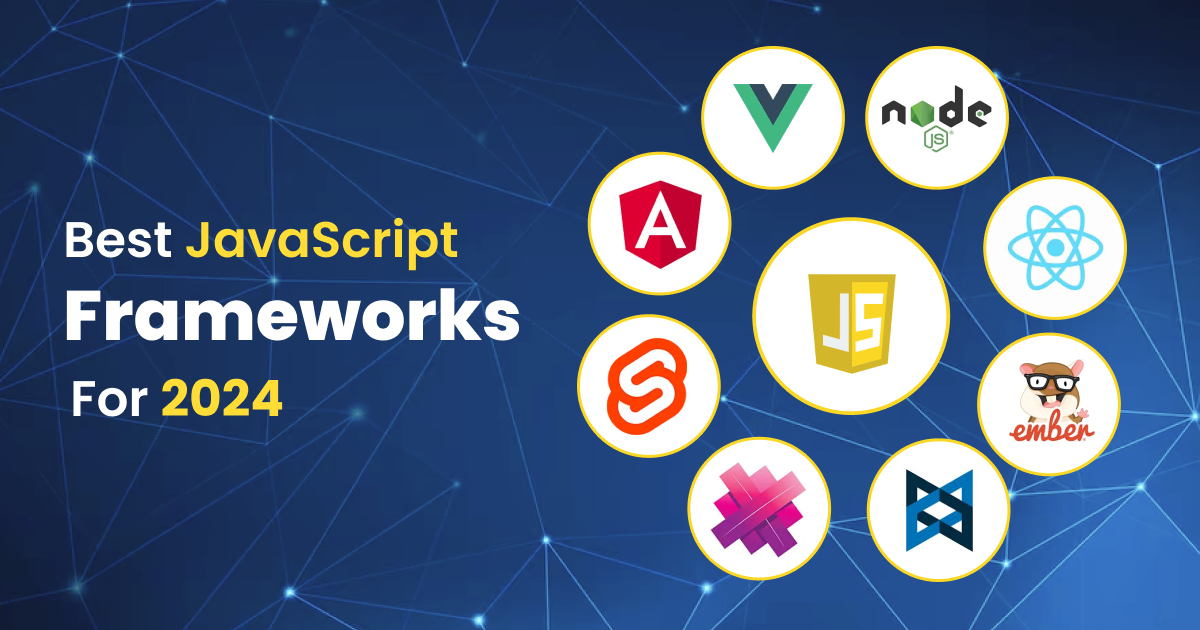In the programming world, JavaScript is one of the fast-moving technologies as now and then, a new framework takes form while the unoptimized and unpopular ones are set aside. Through this article, we will uncover some of the best JavaScript frameworks in 2025 to help you avoid any possible confusion as to which framework to pick for your next project.
JavaScript is one of the most popular programming languages as it can be used for developing both front-end web applications, as well as back-end web applications. As a developer, we hope you know how critical it is to pick the best JS frameworks for the job as this can make or break things in the application development life cycle. We wish to ease the decision-making for you. Read on!
What are JavaScript Frameworks in 2025?
If you’re new to software frameworks, let us give you a brief understanding of them.
A software framework provides a layer of abstraction to the developer by covering a range of commonly used features already baked into the framework, which otherwise would’ve required additional coding. These features could vary significantly with each programming language. Written in the programming language JavaScript, the latest JavaScript frameworks provide several built-in functions for a range of tasks, which the developers can modify and use as per their requirements.
Frameworks are a great tool for speeding up application and website development as the developers can simply reuse chunks of code and achieve results faster, making it the number one reason why the majority of developers prefer using a framework.
Why Use JavaScript Frameworks?
JavaScript frameworks, or any framework for that matter, provide various benefits to programmers, which can make using one worthwhile. The primary benefit gained from using the JS frameworks is the time saved in the application development process, which can be further utilized in improving the application logic and its responsiveness across popular platforms and devices.
Other noteworthy benefits of using a framework include the built-in safety measures for common security threats, simplicity, and ease of working with a framework. On top of that, a framework also gives you the ability to build your application in a defined structure, which makes it easier for other developers to maintain and build the application.
Top Javascript Frameworks for use in 2025
Developers are always on the lookout for the best and most developer-friendly JavaScript frameworks, and most of the time, they’ll find themselves lost in their search. To make this search easier for you, we have gathered the most used frameworks in our top JavaScript frameworks list, which we will go over one by one in this section.

Type: Front-End Framework
Created By: Evan You
Vue Websites: 9gag, WebMD, Laravel, Gitlab, and many more.
Vue is a progressive JavaScript framework for web applications that offers both high-performance and interactive interfaces. First launched in 2014, Vue rose to become one of the top JS frameworks, taking inspiration from Angular to deliver a framework that was lightweight, and efficient, and offered the best features from technologies such as React and Angular.
Vue not only functions as an end-to-end full-scale framework but also as a view layer with its state management features like React. Vue is simple, unrestrictive, and highly reactive. It has enabled thousands of web developers to use the framework to code more with less syntax by providing them with an array of commonly used features and code. Vue also offers you the option to use its Single File Vue Components where the HTML, JS, and CSS/SCSS all reside in a single file to create smaller and optimized apps that are not only fast but also extremely efficient.
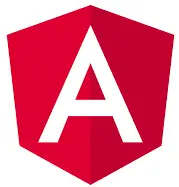
Type: Front-End Framework
Angular Apps: Upwork, PayPal, The Guardian and many more
Built with Typescript and released by Google in 2016, you can think of Angular as a complete rewrite of AngularJS, keeping all of its best features and none of its weaknesses. Angular is among the most popular front-end JavaScript frameworks that unify desktop and mobile development across all platforms. Angular is also a batteries-included framework and comes with everything required to build an enterprise-grade web application.
Some of the many features of Angular include caching support for better performance, code reusability, loads of third-party integrations, and the ability to create Single-Page Applications and Progressive Web Apps. The framework also has a Lazy Loading feature, which you can use to load objects on-demand to deliver a smooth and responsive user experience.
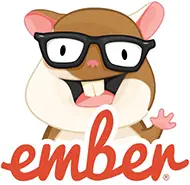
Type: Front-End Framework
Ember falls under the frontend JS frameworks category and is a powerful framework for building a range of modern web applications. Ember is inspired by one of the productivity mottos followed by Ruby on Rails, which focuses on “Convention over Configuration” to maintain flexibility. Ember works out-of-the-box for a wide variety of web applications by providing several features, such as a built-in development environment with a powerful Command Line Interface(CLI), a URL router that supports nested URLs, dynamic URL segments, and query parameters.
Some of the many key benefits provided by Ember include scalability, two-way data binding, and easy access to the data with the Ember Data library. Ember also offers robust testing capabilities with up to three levels of autogenerated tests to nail every problem. It also uses a high-performance renderer called Glimmer and supports third-party add-ons to take your web application to the next level.

Type: Front-End Framework
Svelte is a front-end JavaScript web development framework that was released back in 2016. Much like other tools such as React or Vue, Svelte is also one of the most popular JavaScript frameworks, but its execution style makes it far superior compared to the other frameworks. The reason behind this is although Svelte is a component framework, it incurs a very minimal performance hit on your web applications by running at build time and converting components to efficient imperative code as it updates the DOM. The takeaway from this feature is the ability to develop lightning-fast and high-performance web applications.
Like other front-end JavaScript frameworks for web development, Svelte also encourages developers to write as little boilerplate code as possible. Some of the other features of Svelte include support for client-side and server-side rendering comes in a small size with no JavaScript overhead and is highly SEO-friendly.

Type: Front-End Framework
Next is an opinionated and end-to-end front-end JavaScript framework for developing production-ready web applications. Built on React and Node.js, Next is one of the best JavaScript frameworks in 2025 for server-side rendering and generating static websites and is fairly popular among large-scale organizations.
Next follows the principle of “build once and run anywhere” which enables web developers to use the framework for building not just web apps, desktop apps, and mobile apps, but also Progressive Web Apps(PWA). Other takeaways from this framework include automatic filesystem-based routing, baked-in SEO handling, and automatic code-splitting. The framework also offers easy data fetching, and hot reloading of code, and comes with built-in support for CSS.

Type: Front-End and Back-End Framework
Meteor Apps: Illustreets, Pintask, Astronomer, Databazel and many more
Developed in 2012 and written in Node.js, Meteor is a JavaScript framework for web, mobile, and desktop development. Being an isomorphic framework, developers can use Meteor to create efficient and scalable full-scale applications for both client-side and server-side. It comes packed with several useful helpers, reactive templates, events, and other necessary components required to build performant web applications.
Meteor offers many popular features provided by some of the top JavaScript frameworks, such as seamless integration with other frameworks and tools, hot-pushing of updated code to devices, and support for MongoDB. Developers can also use Meteor on the client with front-end frameworks like Svelte, Vue, Angular, Blaze, and more.

Type: Front-End Framework
Similar to Ember.js, Aurelia is a front-end framework for JavaScript and follows the principle of “Convention over Configuration”. Released back in 2014, Aurelia provides a vast collection of modules written in JavaScript or TypeScript, which you can piece together to create rich and engaging web applications for mobile, desktop, and web. The framework also conforms to all the major industry standards.
Since its release, Aurelia has undergone significant changes to provide several vital feature modules written either in JavaScript or TypeScript that add to its capabilities, such as binding, metadata, dependency injection, router, and many more. It also offers support for various plugins to further improve your web application with validations, internationalisations, and model dialogs, to name a few.
The next three entries in our list of the best JavaScript frameworks in 2025 are not technically frameworks but instead are libraries. We believe they are worthy of a mention in this list as they have played a critical role in enabling developers to seamlessly create amazing web applications.
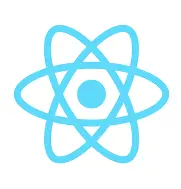
Type: Front-end Library
React Apps: YahooMail, Facebook, Netflix, WhatsApp and many more.
Created by Facebook’s Open Source team, React is a front-end library for JavaScript with which web developers can create some of the most intuitive and interactive user interfaces. React does this with the help of components, where each component contains react code and can be rendered to specific elements in the Document Object Model(DOM).
React is also filled with many life-saving features for web developers. Such as Virtual DOM, which smartly re-renders the entire page layout when updating the code to boost the design process, JavaScript XML(JSX), which gives additional control over the structuring of component rendering, and React Hooks, which makes the code more readable and understandable.
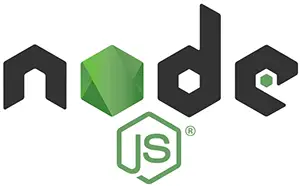
Type: Server-Side Runtime
Node.js Apps: Yahoo, GoDaddy, GroupOn, and many more.
Node.js is one of the most popular runtimes for JavaScript, which lets developers build interactive and powerful real-time web applications by using its non-blocking, event-driven I/O. The result is a lightweight web application running on a single thread that is capable of handling a large number of connections at the same time.
Some of its best features include crazy fast code execution thanks to the V8 engine, easy scalability, equipped with various connectors and libraries, and lightweight and very minimal out-of-the-box. Node is best used for building server-side applications and APIs for real-time applications.
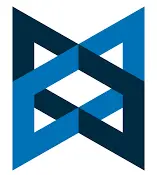
Type: Library
Backbone Apps: SoundCloud, FourSquare, AirBnB, Trello, and many more.
Backbone, at its core, is an open-source JavaScript library based on the Model-View-Presenter architecture. Backbone was designed with the purpose of providing a defined structure to your web applications by providing the models with key-value bindings and custom events. It also provides a large collection of rich APIs for numerous functions. For the views in your web application, Backbone provides declarative event handling and ties everything up to your existing API over a RESTful JSON interface. The library is very lightweight and can be used to build Single-Page Web Applications and to keep everything in sync.
Conclusion
JavaScript is a well-established programming language that has been preferred by thousands of web developers to date. While JavaScript in itself is fairly easy to work with, developers have access to a wide range of top JavaScript frameworks to help them build web applications even faster. As daunting as it may seem, picking the right JavaScript framework should never be done hastily. Only after careful examination of the features of each framework and checking whether they’re useful to the project at hand, the developer should adopt a framework.
Throughout this article, we shed some light on 10 of the best well-established and new JavaScript frameworks for 2025 as new frameworks pop up every year or so. We hope this list will help you in choosing the right JS framework for your upcoming web development projects. Good Luck!
Frequently Asked Questions (FAQs)
Q1- What is a JavaScript Framework?
Ans: A group of lines of code known as a JavaScript framework serves as the basis for creating online apps. Data binding, state management, and other capabilities that are frequently found in frameworks may help developers save time and effort.
Q2- What are the benefits of using a JavaScript framework?
1- Increased productivity: By providing a platform for creating web applications, frameworks may save developers time.
2- Increased code quality: By offering standardized code structures and patterns, frameworks can aid in enhancing code quality.
3- Enhanced adaptability: Frameworks may be changed to suit the particular requirements of a project.
4- Flexibility: Large and active communities that may offer resources and help to developers are present in frameworks.Q3- What are the most popular JavaScript frameworks?
Ans: There are many popular JavaScript frameworks. A few of them are React, Angular Vue.js, Ember.js, Meteor, Mithril, Node.js, Polymer, Aurelia, Backbone.js
Q4- How do I choose the right JavaScript framework for my project?
Ans: There are a few things to take into account while selecting a JavaScript framework, including:
The project’s scope and intricacy.
The necessary elements are specific.
The level of experience the project’s developers will have.
The project’s financial budget.Q5- Where can I learn more about JavaScript frameworks?
Ans: To learn more about JavaScript frameworks, there are a variety of resources accessible, such as books, conferences, meetups, online forums, and online courses.

